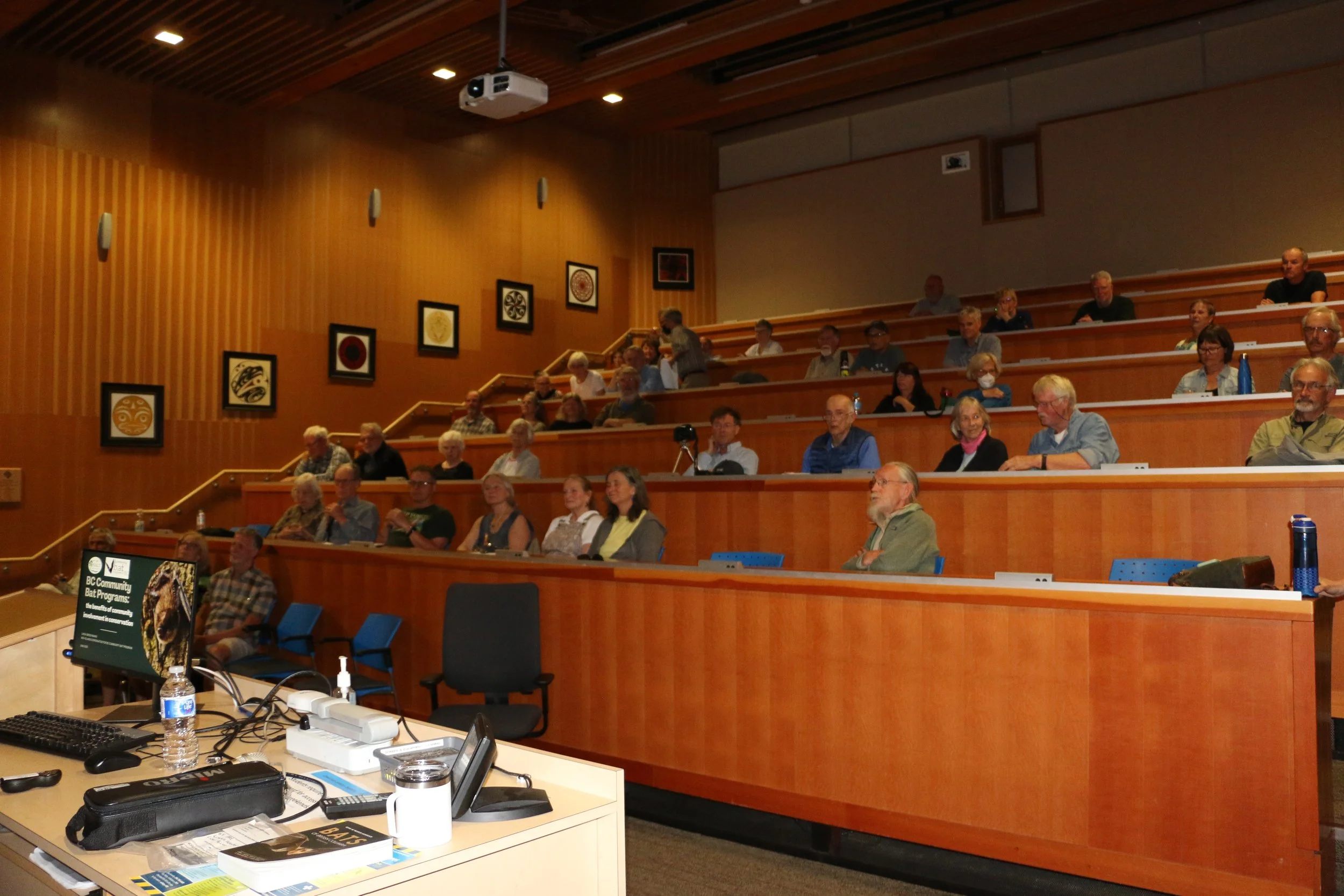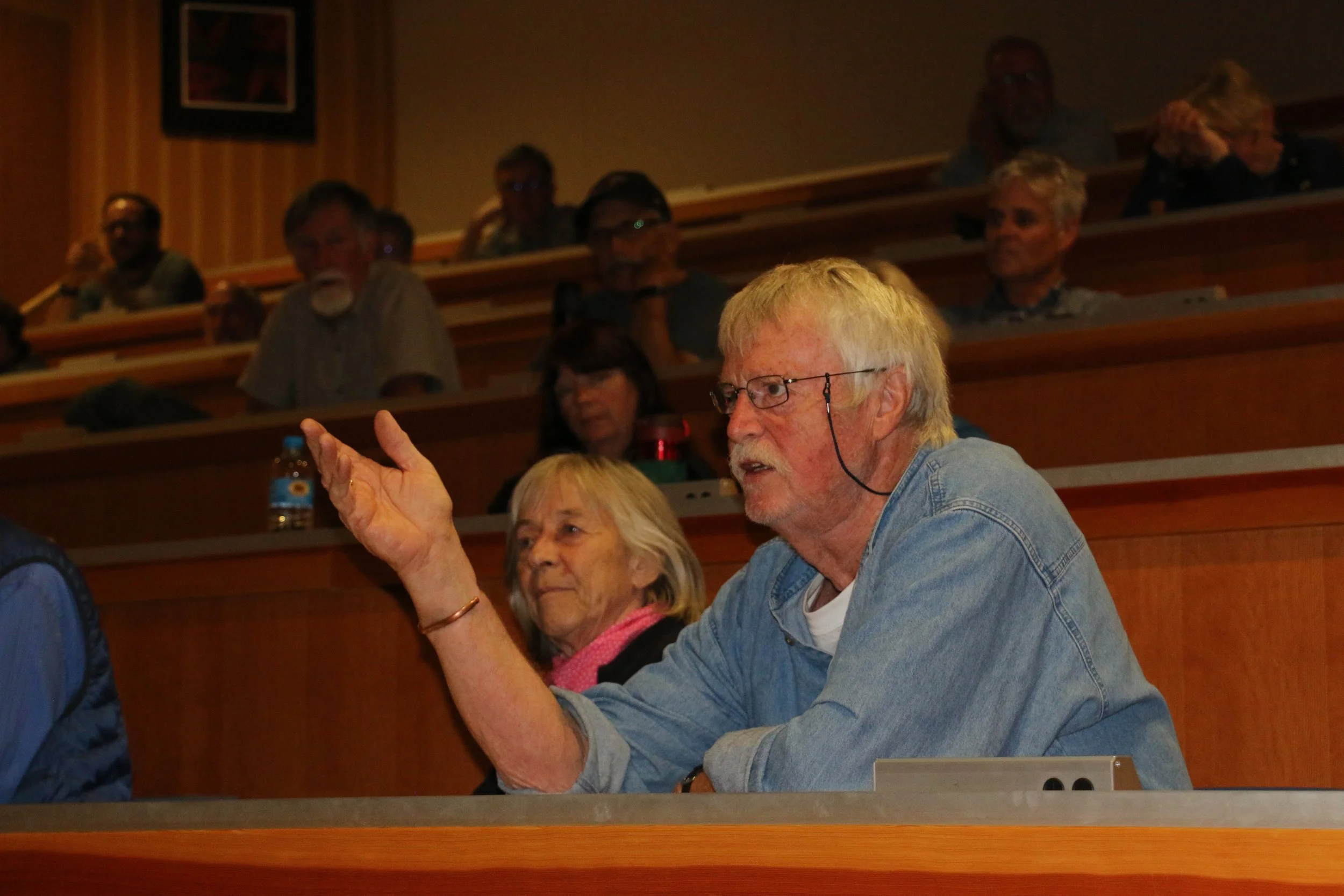CERCA Bat Symposium June 2023
CERCA Bat Symposium June 5, 2023. Notes by Steve Nazar
On Monday June 5, Bernie Juurlink and Cliff Stainsby of CERCA held the Bat Symposium they have prepared for several months. Our audience numbered 48.
1. Bats & their Viruses: Are We to Blame for our "Bat Virus" Pandemics?
Dr. Vikram Misra, U. Saskatoon professor emeritus, a virology researcher working with bats, noted his interest was rooted in how stress affects our resistance to viruses. An example is how a stressed person may have herpes outbreaks they otherwise suppress. Bats don't show obvious viral sickness, except for rabies, but do shed more virus particles when stressed. We humans may have become a new cause of their stresses, contributing to outbreaks and pandemics.
Bats collectively host four families of viruses that spill over to humans: 1. rabies; 2. the coronaviruses (SARS, MERS COVID etc); 3. the filoviruses (Ebola, Marburg etc); and 4. paramyxoviruses (Nipah, Hendra etc). Evidence is circumstantial for some.
Bats resist inflammatory outcomes from their viral infections possibly as a side effect of having adapted to high rates of aerobic metabolism. Thus they evolved to better handle "reactive oxygen species" -- toxic metabolic byproducts that also participate in inflammatory mechanisms. Most viral damage done in humans, for example by COVID, is via excessive inflammatory response.
Our forcing of habitat loss and climate change is stressing bats. White nose fungal infection is a new stressor. Urban fruit trees, pig farming and "wet markets" are bringing us into more contact with bats. It thus appears we are increasing viral spread from bats to us. The high viral loading of bats affects them little, but some of their pathogens commonly kill humans if crossed over. Steve Nazar question - how ID pathogens in local bats? A: very time consuming and expensive.
2. Community Bat Programs of BC
Linda Brooymans, Stewardship Manager, Nanaimo & Area Land Trust, outlined history of BC Community Bat Program. With arrival of white nose syndrome in 2006, populations of some species dropped to 10% of earlier. But there was little baseline data. In 2012 a protocol was designed for "citizen science". Program operates mainly on private grants, with a little help from BC government -- now 22 regional coordinators. Objectives: to increase knowledge of roost sites, increase population sizes, work with private landowners to protect roosts, educate public re habitat needs. In 2022, there were 281 count sites, 1120 counts done and 86% of counts were by volunteer efforts. 51% of sites now have two or more years of data.
In Nanaimo area, she knows of very few roost sites, so asks for help to identify them. Bat boxes can be registered and volunteers will survey them. A box can roost 300 bats. Species most-threatened by white nose tend to roost in buildings. Species identification in roosts is through DNA/guano sampling. She can get those done. Rabies is an issue but vaccinations are better now.
Questions: where are local roosts? -- A: Victoria group has database, but help is needed in Cowichan to identify more roosts.
Should observers get rabies shots? -- A: Yes, and need permit, and need safety-wear. Are there workshops? -- A: Yes.
What are benefits of bats? -- A: All BC bats are insectivores.
What is survival value of clustering? -- A: High bat number colonies are usually maternity colonies.
Comment by Bill Heath: Only definite white nose ID in BC was recently in Grand Forks guano sampling; not confirmed in live bats here yet.
Comment from audience: Rabies shots cost $1000/person; Linda says free for a need.
3. North American Bat Monitoring Program (NABat)
Jesse Patterson, Ecosystems Section Head, Ministry of Forestry BC, Nanaimo described an ongoing (since 2016) continental bat monitoring program. Most work has been in developing standard protocols and reporting architecture. Much funding has come from BC Parks via license plate fees. Observed bat activity, not absolute numbers. Cow Valley is a good bat environment. Used acoustic recorders on 10X10 km grid cells in accessible parts of province. Estimates needs 10 years of data to see trends. At seven years, have not seen any great variation over time.
Questions: What can CERCA do to contribute data we are developing? -- A: analysis requires specialized, rare skill set. Province has data repositories, publicly accessible. Wildlife Conservation Society: Cori Lausen, Brian Patterson may advise on data format, analysis.
Q: Has any correlation locally been done between bat numbers and insect populations? A: None done locally, other areas have been done.
4. Importance of Wildlife Trees for Bats
Chris Steeger, Registered Professional Biologist (Wildlife specialization) noted that the 15 local bat species are about the same size, 8 to 13 cm, a small part of the global three-decade range. He attributed this to their adaptation to the BC mature and old-growth forests. 80% of local species roost only in dead standing trees and the rest will roost both in dead and live trees. Cedar trees that are often hollow, are best. Woodpecker holes are typical maternity roosts. Roost characteristics are more important than location -- bats travel average 1.5 km to forage. Females use lower elevations in valleys. Water access seems unimportant. Roosts were found by observation at dusk, and by telemetry. A preference was observed for specific decay stages of larger, recently-dead and partly-dead trees amid uncluttered canopies. Such trees are common in natural forests but absent in commercial forests. Wildlife trees for bats can be made artificially by arborists. Best practice is to retain large wildlife trees - 5% retention is now part of BC harvest license agreements.
We ran out of time in the lecture theatre through a misunderstanding with Vancouver Island University Admin, so the report on survey work done by Bill Heath and Cliff Stainsby of CERCA (and collaborators including Cowichan Naturalists), "Bat Acoustic Monitoring in the Cowichan Valley" had to be deferred.
We were also missing Tim Ennis, of the North Island Chapter of BC Community Bat Program, who was to have talked about "The Rolls of Bats in Our Ecosystems".
We hope to schedule another Symposium in which the talks can be completed.


